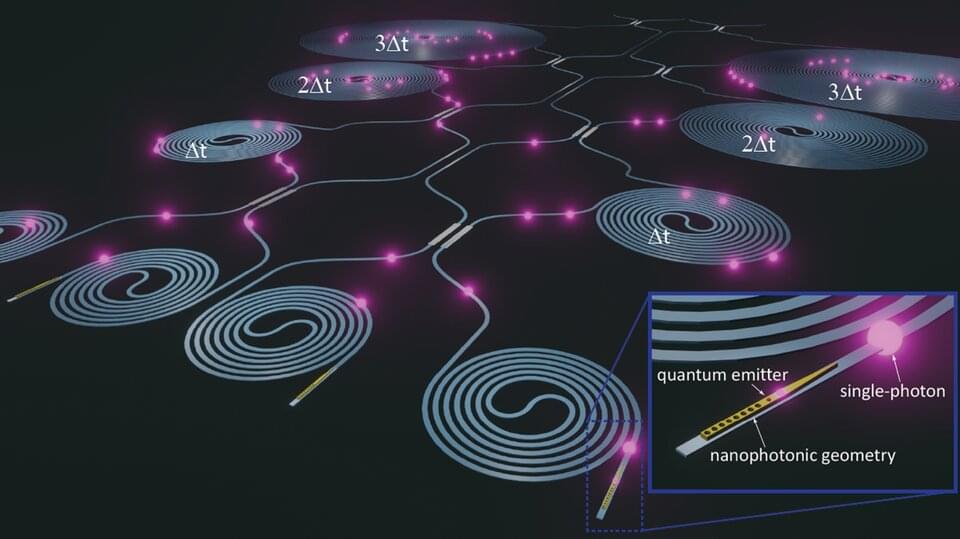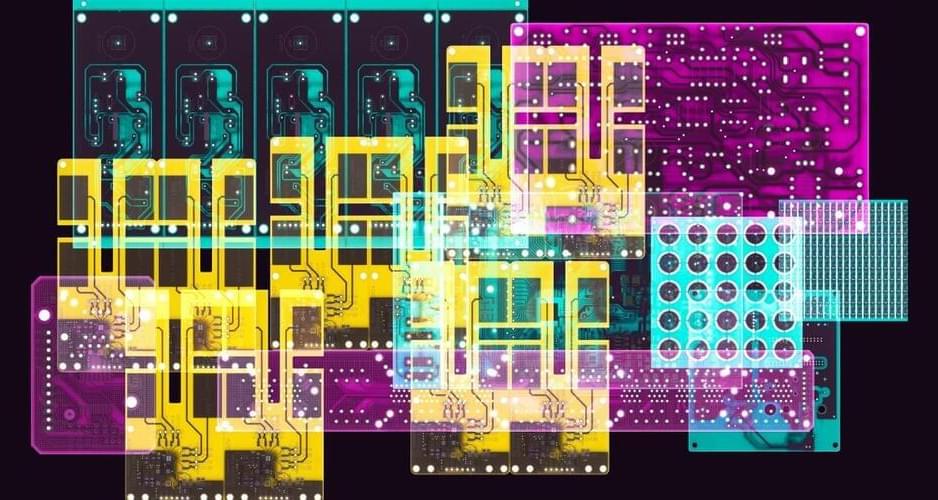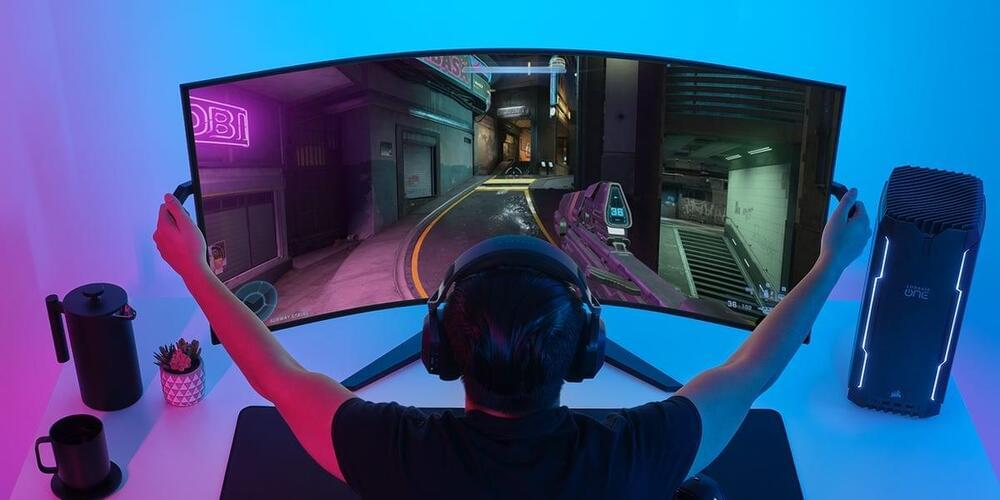Year 2020 face_with_colon_three
The rigorously proven No Free Lunch theorem shows that physicists will always be needed to determine the correct questions.


The ability to transmit and manipulate, with minimal loss, the smallest unit of light—the photon—plays a pivotal role in optical communications as well as designs for quantum computers that would use light rather than electric charges to store and carry information.
Now, researchers at the National Institute of Standards and Technology (NIST) and their colleagues have connected, on a single microchip, quantum dots—artificial atoms that generate individual photons rapidly and on-demand when illuminated by a laser—with miniature circuits that can guide the light without significant loss of intensity.
To create the ultra-low-loss circuits, the researchers fabricated silicon-nitride waveguides—the channels through which the photons traveled—and buried them in silicon dioxide. The channels were wide but shallow, a geometry that reduced the likelihood that photons would scatter out of the waveguides. Encapsulating the waveguides in silicon dioxide also helped to reduce scattering.

Scientists are increasingly studying quantum entanglement, which occurs when two or more systems are created or interact in such a manner that the quantum states of some cannot be described independently of the quantum states of the others. The systems are correlated, even when they are separated by a large distance. The significant potential for applications in encryption, communications and quantum computing spurs research. The difficulty is that when the systems interact with their surroundings, they almost immediately become disentangled.
In the latest study by the Laboratory for Coherent Manipulation of Atoms and Light (LMCAL) at the University of São Paulo’s Physics Institute (IF-USP) in Brazil, the researchers succeeded in developing a light source that produced two entangled light beams. Their work is published in Physical Review Letters.
“This light source was an optical parametric oscillator, or OPO, which is typically made up of a non-linear optical response crystal between two mirrors forming an optical cavity. When a bright green beam shines on the apparatus, the crystal-mirror dynamics produces two light beams with quantum correlations,” said physicist Hans Marin Florez, last author of the article.

Vertigo3d/iStock.
According to the firm, such TVs are part of its vision to advance the versatility of such screens, allowing users to utilize them in multiple ways. “To achieve this vision, it’s important to re-architect television by eliminating all common frustrations and making it extremely easy to secure televisions on any surface inside homes. By realizing this vision, Displace is effectively creating the next computing platform, and the potential applications are limitless.” said founder and CEO Balaji Krishnan.

Seminar summary: https://foresight.org/summary/career-counseling-with-sonia-arrison/
Join us:
► Twitter: https://twitter.com/foresightinst.
► Facebook: https://www.facebook.com/foresightinst.
► Instagram: https://www.instagram.com/existentialhope/
► LinkedIn: https://www.linkedin.com/company/foresight-institute.
If you enjoy what we do please support us via Patreon: https://www.patreon.com/foresightinstitute.
If you’re interested in joining these meetings consider donating through our donation page: https://foresight.org/donate/
Foresight Institute advances technologies for the long-term future of life, focusing on molecular machine nanotechnology, biotechnology, and computer science.
Subscribe for videos concerning our programs on Molecular Machines, Biotechnology & Health Extension, Intelligent Cooperation, Neurotech, Space, and Existential Hope.

MIT neuroscientists have published a key new insight on how working memory functions, in a study published in PLOS Computational Biology.
The researchers at The Picower Institute for Learning and Memory compared measurements of brain cell activity in an animal performing a working memory task with the output of various computer models representing two theories on the underlying mechanism for holding information in mind.
The results favored the newer theory that a network of neurons stores information by making short-lived changes in the connections, or synapses, between them, rather than the traditional theory that memory is maintained by neurons remaining persistently active.
https://doi.org/10.1101/2022.12.21.
Community Detection in Brain Connectome using Quantum Annealer Devices:
Recent advancements in network neuroscience are pointing in the direction of considering the brain as a small-world system with segregated regions integrated to facilitate different cognitive tasks and functions. In this context, community detection is a pivotal issue in computational neuroscience. In this paper we explore community detection within brain connectomes using the power of quantum annealers, and in particular the Leap’s Hybrid Solver. Our results shows that quantum annealers can achieve higher modularity index compared to classical annealer while computing communities of brain connectomes. Those promising preliminary results points out that quantum annealers might be the better choice compared to classical computing optimization process.
#quantum #brain #networks

Cognitive science sees the brain as a sort of computer, but how does education redesign these cerebral computers? Cognitive scientist, philosopher, and expert on consciousness Daniel Dennett explains.
Watch the Q&A: https://youtu.be/0GJa0xKKSOU
Subscribe for regular science videos: http://bit.ly/RiSubscRibe.
Buy Daniel Dennet’s most recent book “From Bacteria to Bach and Back: The Evolution of Minds” — https://geni.us/4pTW46
There is widespread agreement among researchers in cognitive science that a human brain is some kind of computer, but not much like the laptop. If we look at perceptual experience, and education in particular, as a process of redesigning our cerebral computers, how does the software get designed, and what are the limits of this design process? Daniel C Dennett finds out.
Daniel C Dennett is a cognitive scientist and philosopher with a particular interest in consciousness, free will and the evolution of minds. His newest book, From bacteria to Bach and back, explores how thinking minds could have evolved due to natural selection.
The Ri is on Twitter: http://twitter.com/ri_science.
and Facebook: http://www.facebook.com/royalinstitution.
and Tumblr: http://ri-science.tumblr.com/
Our editorial policy: http://www.rigb.org/home/editorial-policy.
Subscribe for the latest science videos: http://bit.ly/RiNewsletter.
Product links on this page may be affiliate links which means it won’t cost you any extra but we may earn a small commission if you decide to purchase through the link.